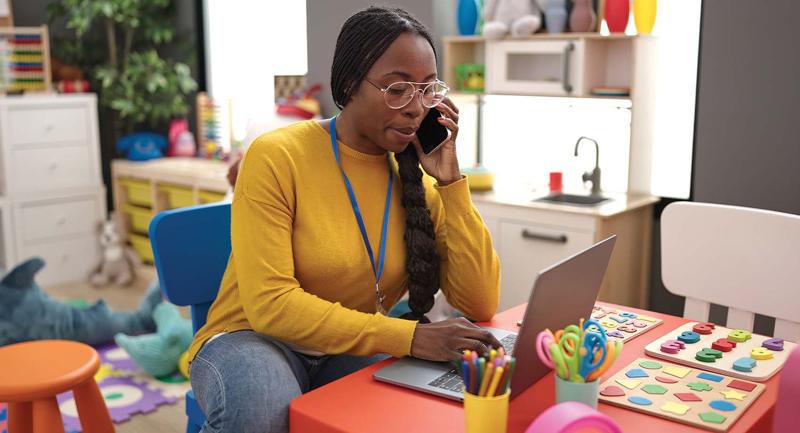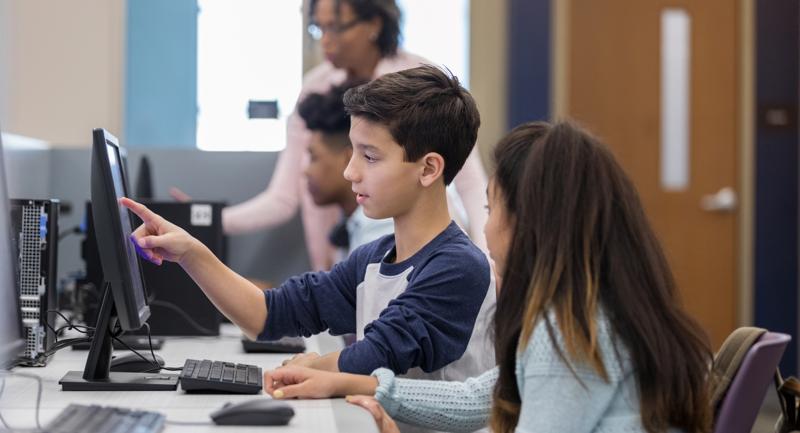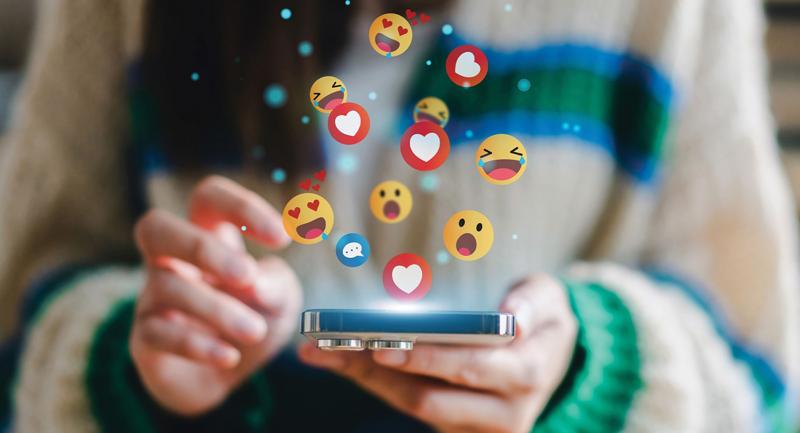One of the responsibilities of a U.S. citizen, according to U.S. Citizen and Immigration Services, is to stay informed of the issues affecting your community. Staying informed today requires a different skill set than previous generations needed, as people grapple with endless amounts of online information, a sea of social media, and an influx of fake news. Educators, therefore, must teach students to be media literate, not only to successfully navigate the deluge of information that inundates them at every turn, but also to be good citizens.
Researchers at Stanford University conducted a study in 2016 that revealed a startling truth: Students are not able to evaluate the credibility of information and media presented online. They have a difficult time thinking critically about various forms of media, who created the media, and why. Without these skills, students will be hard-pressed to stay informed and engage in the democratic process.
Asking the Right Questions
Several years ago I designed a "Got Credibility?" Google Form to help students evaluate websites. Before they could cite a website in their class work, students had to consider questions like:
▪ Does this online resource have an author?▪ Does the author have credibility in the field he or she is providing information about?▪ What are the author's qualifications, education, and credentials?▪ Is the author associated with an institution, organization, or company?▪ If the author is associated with an institution, organization, or company, does this add to or take away from his or her credibility?
My students do not enjoy this Google Form. It's extensive and thorough and takes time to complete. It requires them to think about what they found online and whether it was credible and worth citing. It's much easier to surf the internet and grab information quickly, so training students to slow down, ask questions, and check facts is a process.
Eventually, however, students get better at asking the right questions. They learn how to identify sponsored content versus news stories and how to cross-reference information to check the accuracy of facts.
Going "Wayback" for Context
When students research a big event, like Hurricane Katrina, their search results will often surface information that was written after the event. These historical accounts are obviously different from the way the events were reported in real time. This kind of research can spark discussions about analyzing websites and their purposes.
A Google search of Hurricane Katrina will yield millions of results. The top results are from Wikipedia, History.com, and CNN. If students click on any of these sites, they'll find an overview of the event: Hurricane Katrina was a category 3 hurricane when it hit the Gulf Coast, causing the levees to breach, resulting in massive flooding, and wreaking havoc on the city of New Orleans.
But how was the storm reported on as it was unfolding? I like to use the Wayback Machine, an archive of the internet, as a tool for student research. It captures and saves webpages over time, allowing students to revisit moments in history and compare the information provided at the time of an event with the information available now. Students researching Hurricane Katrina, for example, can search CNN.com on the Wayback Machine, select August 29, 2005, and see news about the storm as it appeared on the CNN website on that day. They can see the live weather map showing the progress of the hurricane as it approached the Gulf Coast. They can read news reports that capture the devastation in powerful images and firsthand accounts. Students may also notice inconsistencies in the information provided by news outlets as an event unfolds compared with the historical accounts.
The Wayback Machine also makes it possible for students to revive dead links as they conduct research. They can paste a dead link into the Wayback Machine and see the content that used to live on that website.
The Wayback Machine gives students the power to be true investigators, which grants educators an opportunity to teach media literacy. Teachers can start conversations about the purpose of different types of web pages and content on the internet. Who is the audience for these different types of web pages? How might the information on these pages be different? When would students turn to a news account of an event versus a historical account? These are essential questions for students to ask as they navigate information on the internet and attempt to stay informed.
Smart and Savvy about Social Media
Many students view social media as an informal avenue to connect with friends and share their own thoughts, photos, and videos. Despite spending hours on different platforms each week, many don't think about whether the posts, images, and information shared are credible.
Educators can use social media in the classroom to teach students not to take statements or images online at face value. I begin each class with a welcome task that introduces information about the topic we'll be studying that day. We might take a look at an article, watch a video clip, or explore an online resource. I also sometimes present them with a related tweet or Facebook post and ask them to analyze it, assess its credibility, and discuss it in small groups. The simple act of engaging in this process teaches them to ask questions about who created the post or message, who it is intended for, and what the purpose and impact is.
At first when students encounter social media posts that are inaccurate or blatantly false, they are shocked and outraged. I have to stifle a smile when they say things like, "What? This isn't true!" "This is totally fake!" "I cannot believe someone would believe this." The realization that they have to be vigilant when they encounter information on social media is new for many of them. They immediately become curious about the other types of information shared on social media. This is my goal, of course. I want them to ask questions and think critically about everything online, including social media.
Cultivate Fact-Checking Fanatics
If we give students devices, then we must also give them strategies to navigate the complexities of the online world. Students need regular practice analyzing different forms of media to determine its purpose, identify its intended audience, and think critically about its impact. Educators must teach students how to be citizens capable of fact-checking websites, tracking changes in the way events are portrayed in the media, and assessing the credibility of information presented on social media.







